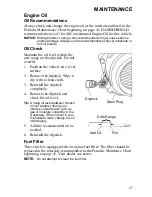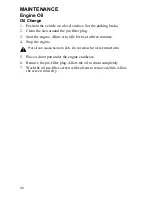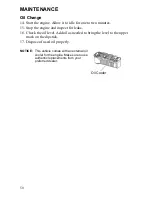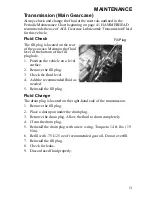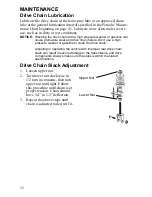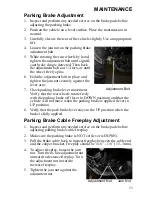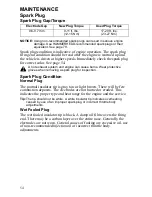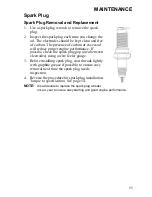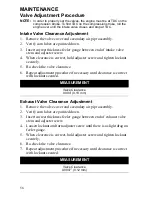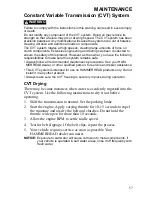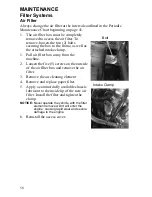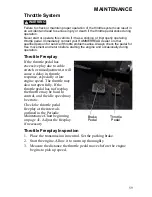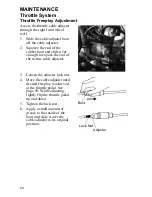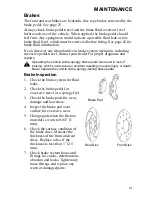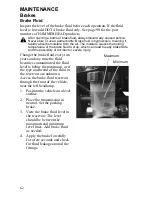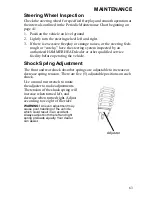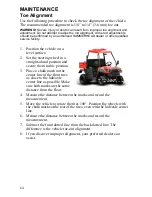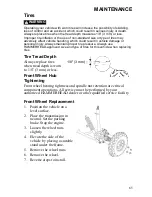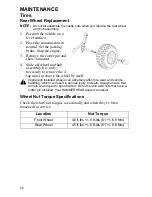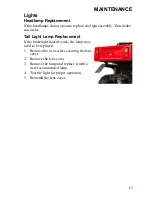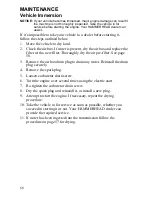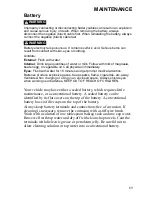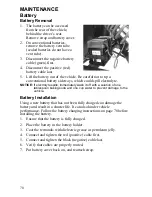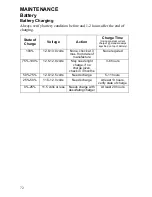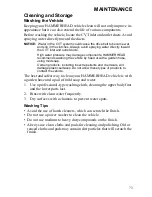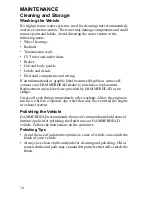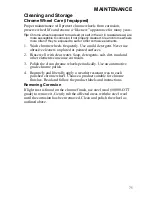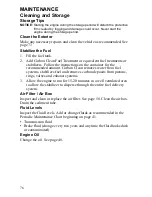
61
MAINTENANCE
Brakes
The front and rear brakes are hydraulic disc type brakes activated by the
brake pedal. See page 25.
Always check brake pedal travel and the brake fluid reservoir level
before each use of the vehicle. When applied, the brake pedal should
feel firm. Any sponginess would indicate a possible fluid leak or low
brake fluid level, which must be corrected before riding. See page 62 for
brake fluid information.
If you discover any irregularities in brake system operation, including
excessive pedal travel, contact your dealer for proper diagnosis and
repairs.
Operating the vehicle with a spongy brake pedal can result in loss of
braking, which could cause an accident resulting in severe injury or death.
Never operate the vehicle with a spongy-feeling brake pedal.
Brake Inspection
1. Check the brake system for fluid
leaks.
2. Check the brake pedal for
excessive travel or a spongy feel.
3. Check the brake pads for wear,
damage and looseness.
4. Inspect the brake pad wear
surface for excessive wear.
5. Change pads when the friction
material is worn to 0.04" (1
mm).
6. Check the surface condition of
the brake discs. Measure the
thickness of the front and rear
discs. Replace a disc if the
thickness is less than 1” (2.5
mm).
7. Check brake system hoses and
fittings for cracks, deterioration,
abrasion and leaks. Tighten any
loose fittings and replace any
worn or damaged parts.
Brake Pad
Rear Disc
Front Disc
Summary of Contents for 2013 R 150
Page 1: ...1...

